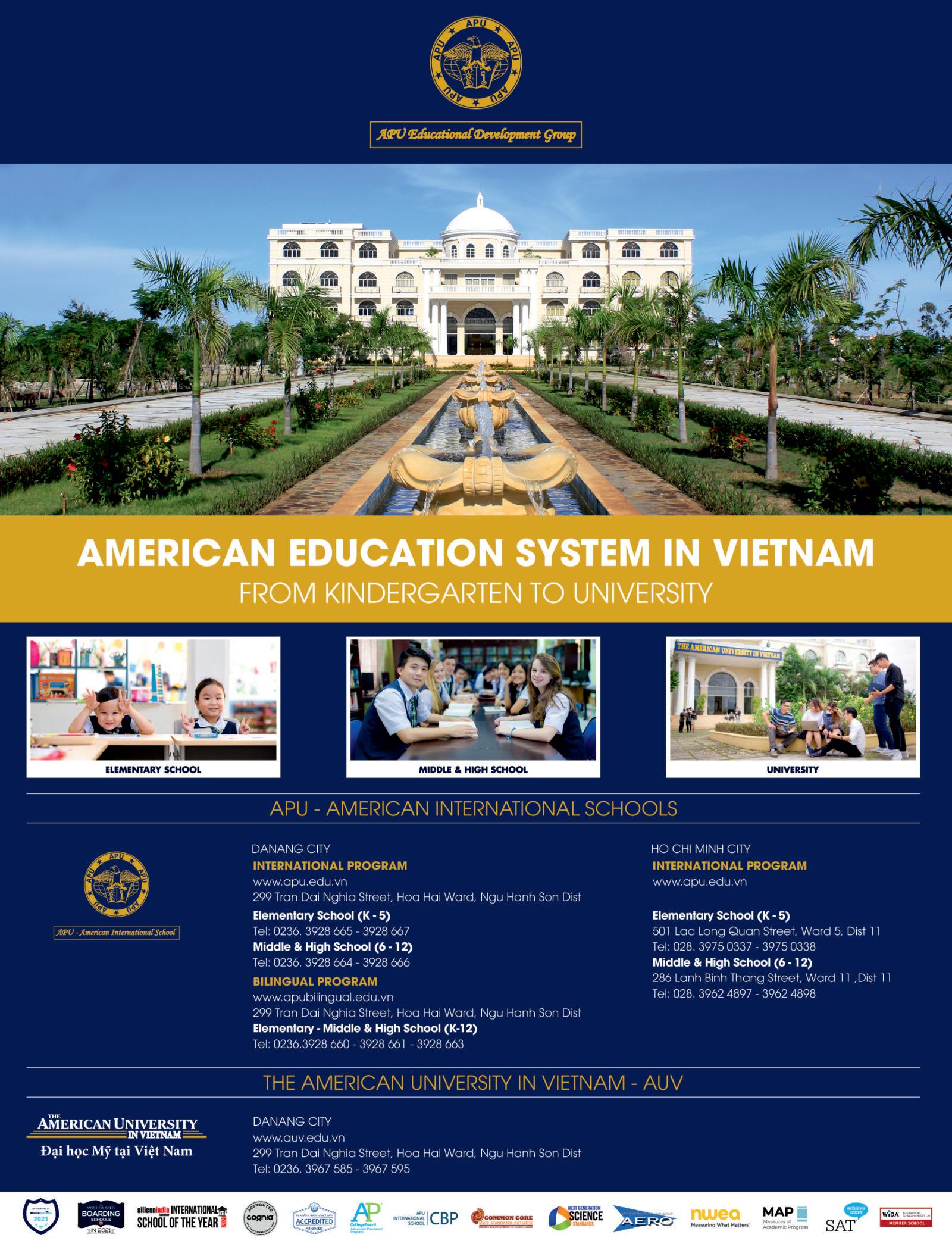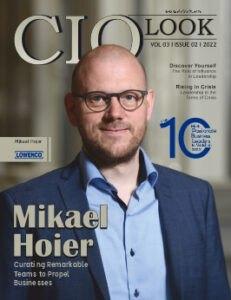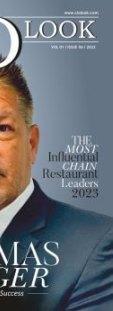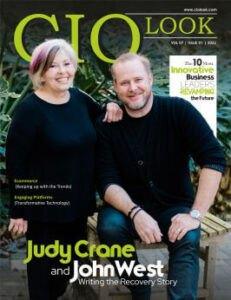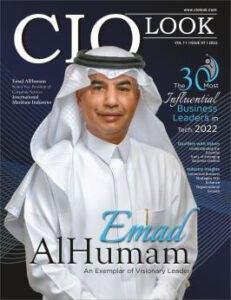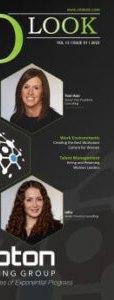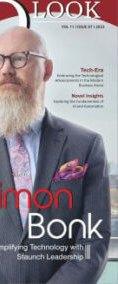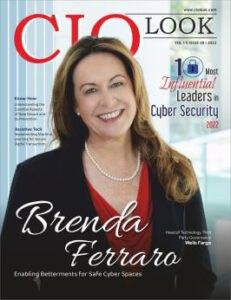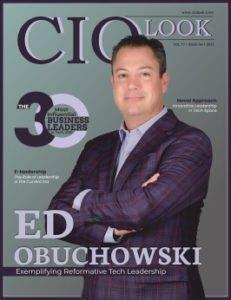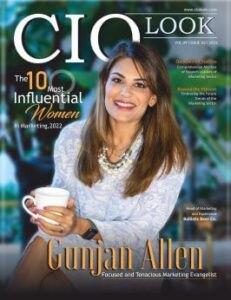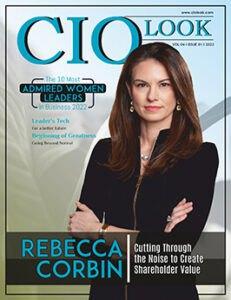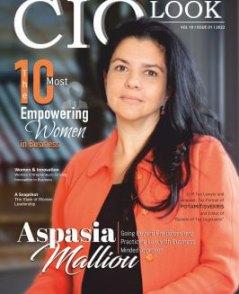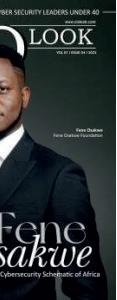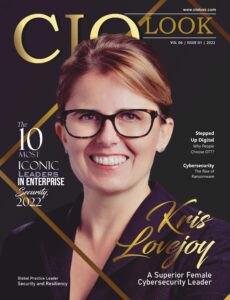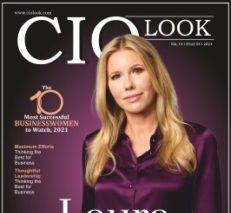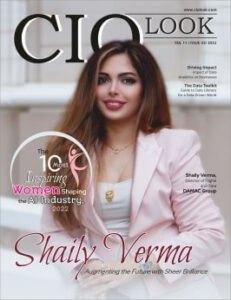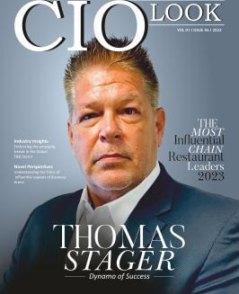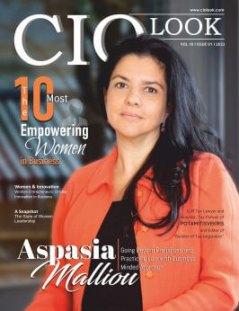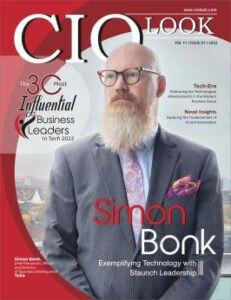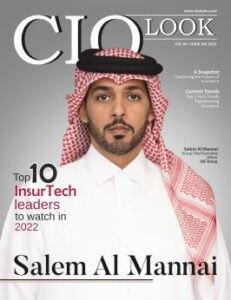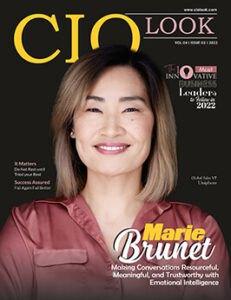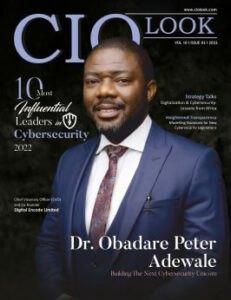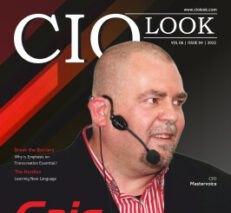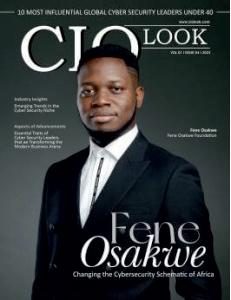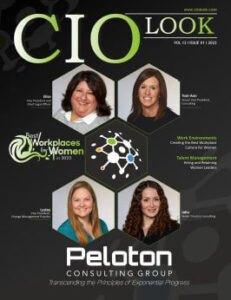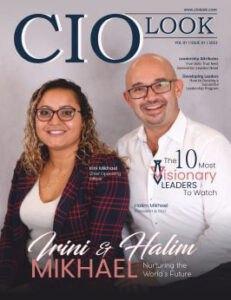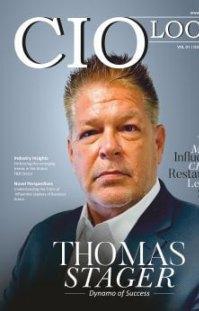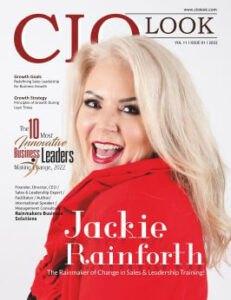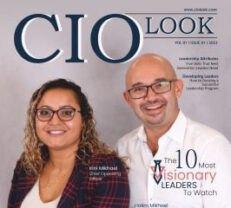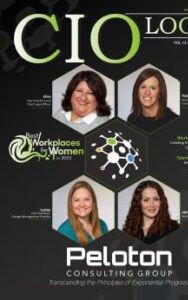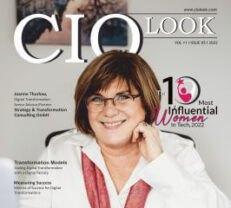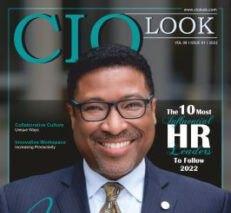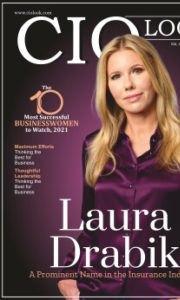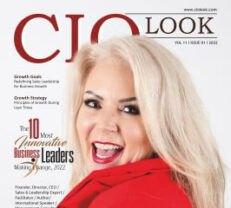Richard Larson Legacy, 2025
Richard Larson's Building the Foundation of Learning: The
Implemen�ng Change: Leading the Way in Global Educa�on Strategies
Professional Networks: The Rise of Educa�on Technology Influencers
Inspiring Generations through Passion, Mentorship, and Model-Based Thinking

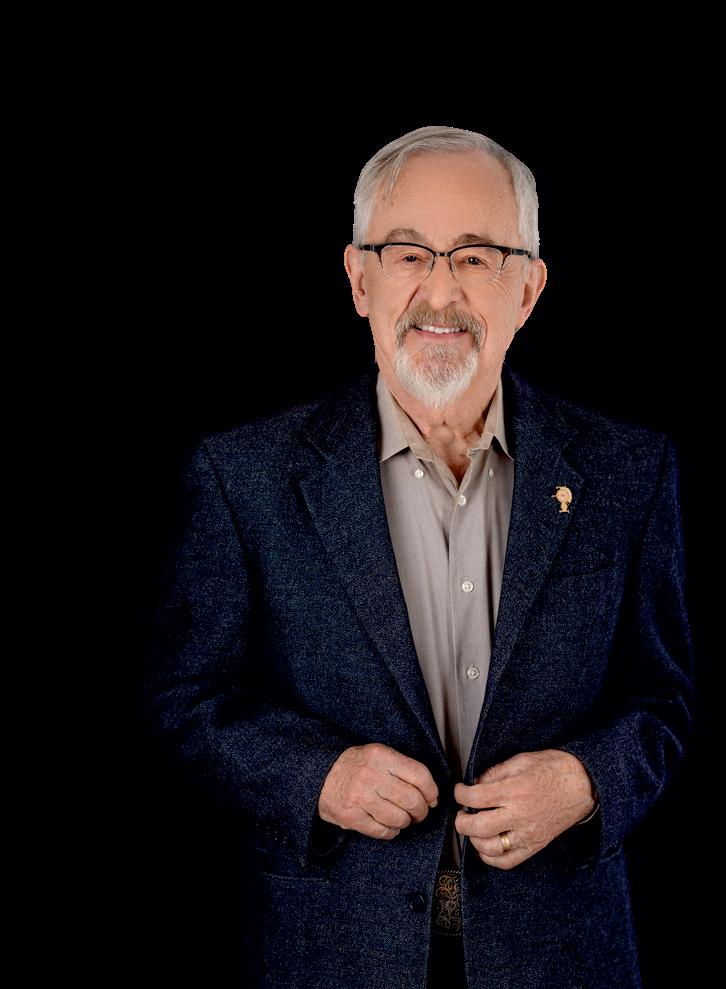


THE UPCOMING EDITION OF GET FEATURED IN
CIOLOOK
SCAN THE QR CODE

REGISTER NOW
BECAUSE YOUR STORY DESERVES THE SPOTLIGHT




Richard Larson’s Transformational Impact on Education
Visionaryeducatorsareinstrumentalinadvancingthe
future of education They extend beyond conventional teaching roles by driving transformationthroughinnovation,strategicleadership,anda strong dedication to student development. These educators actively challenge outdated practices, embrace emerging ideas, and continually seek more effective ways to engage learners and equip them for a rapidly evolving world Grounded in purpose, their work fosters curiosity, promotes critical thinking, and supports the creation of inclusive, dynamic, and future-oriented learning environments. They recognize that education is a living discipline, one that demandsbothcourageandcreativitytoevolvemeaningfully. Among such distinguished educators is Richard Larson, whosecareerexemplifiestheseideals.
CIOLook in its recent edition titled Building the Foundation of Learning: The Richard Larson Legacy, 2025 recognizes Richard Larson’s enduring impact as a longtime professor at MIT. Throughout his distinguished career, Larson has seamlessly integrated research, teaching, and public service, leaving a profound influence on generations of students and transforming approaches to knowledge dissemination His initiatives, such as MIT BLOSSOMS and extensive outreach to underserved communities, exemplify his unwavering commitment to
democratizing education and broadening access to highquality STEM learning. Renowned for his interdisciplinary expertise and pragmatic educational philosophy, Larson emphasizes critical thinking and intellectual curiosity over rote memorization. His dual role as both researcher and mentor reflects a holistic approach to education, fostering academicexcellenceandpersonalgrowthinhisstudents.
Even in retirement, Richard Larson continues to make a significant impact through the establishment of the "Professor, Post-Tenure" designation and his advocacy for MODEL-Based Thinking, a practical framework that promotesstructuredreasoningineverydaydecision-making. His contributions extend beyond academia, as demonstrated by his involvement with institutions such as Notre Dame CristoReyHighSchool,wherehesupportseffortstoadvance educational equity Larson’s legacy is defined by a unique blend of academic excellence and meaningful human connection His work represents more than decades of institutionalservice;itreflectsalastinginfluenceontheways weapproachteaching,learning,andleadership.Hestandsasa model of purposeful, compassionate, and forward-looking scholarship.
Haveagreatreadahead!

Managing Editor
Con

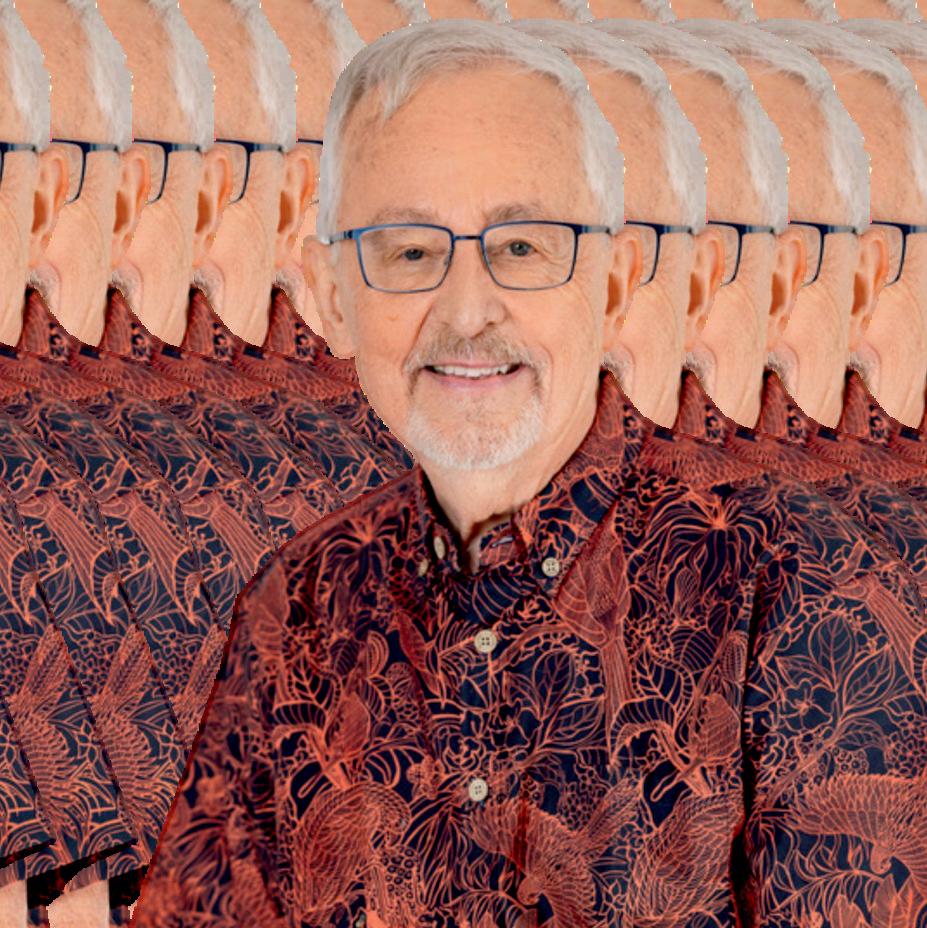
THE SIGNATURE STORY Richard Larson’s
Inspiring Generations through Passion, Mentorship, and Model-Based Thinking
16.
INDUSTRY INSIGHTS
Professional Networks: The Rise of Education Technology Influencers
18. Implementing Change: Leading the Way in Global Education Strategies



www.facebook.com/CIOLook
www.x.com/CIOLookmagazine


www.ciolookmedia.com
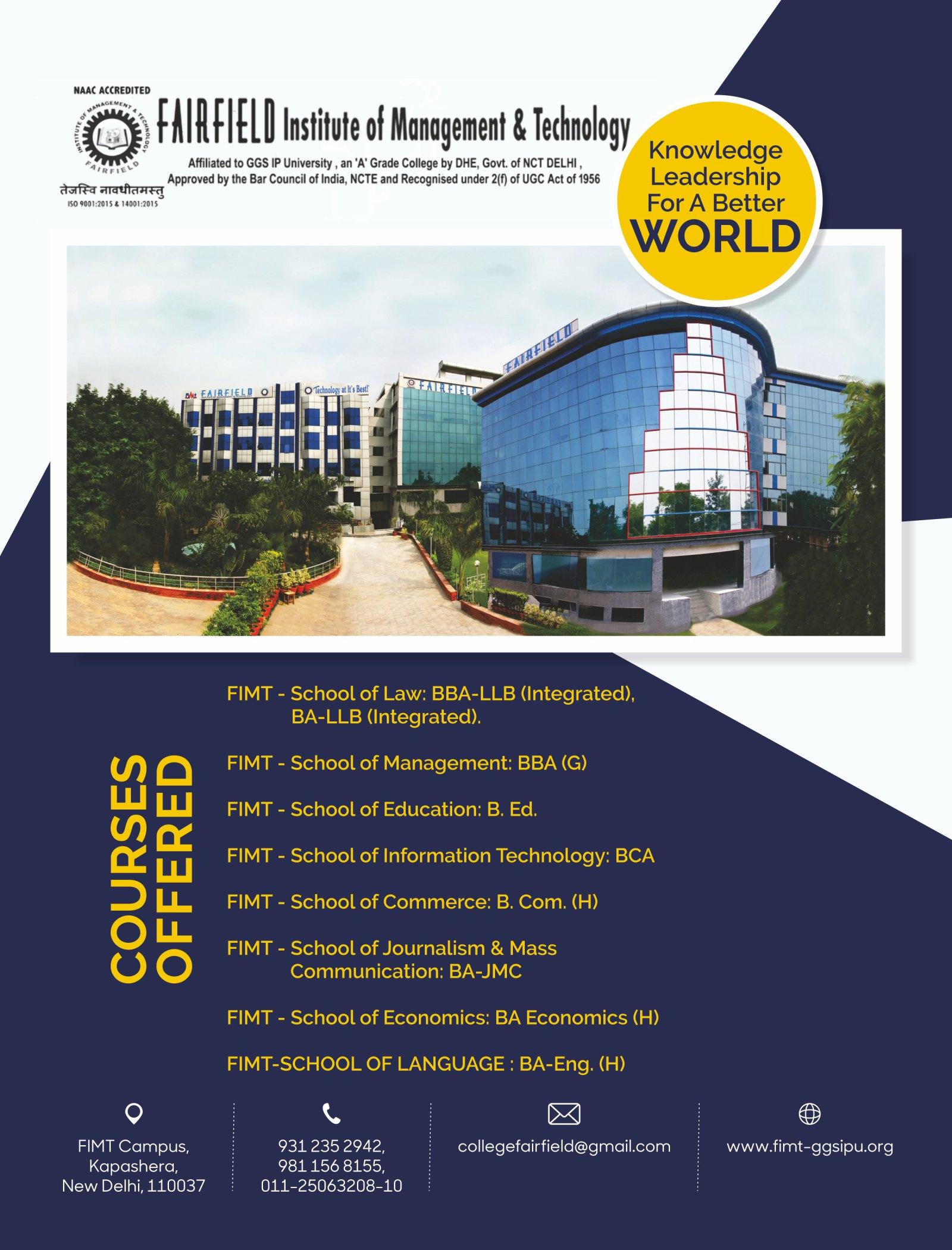
Inspiring Generations through Passion, Mentorship, and Model-Based Thinking

Larson"s
“Richard Larson’s career embodies the highest ideals of academia—curiosity, generosity, innovation, and a deep respect for learners.”

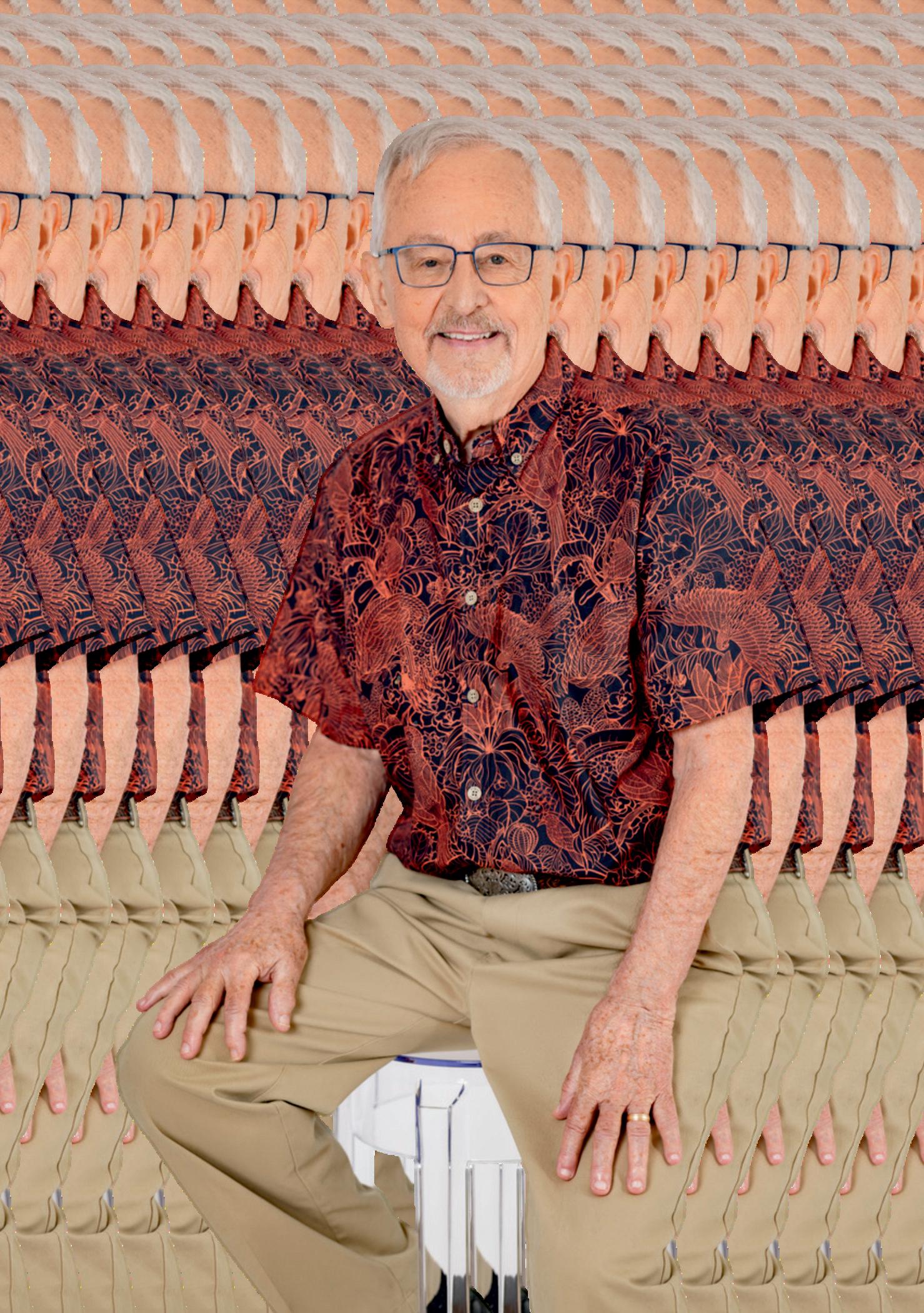


“

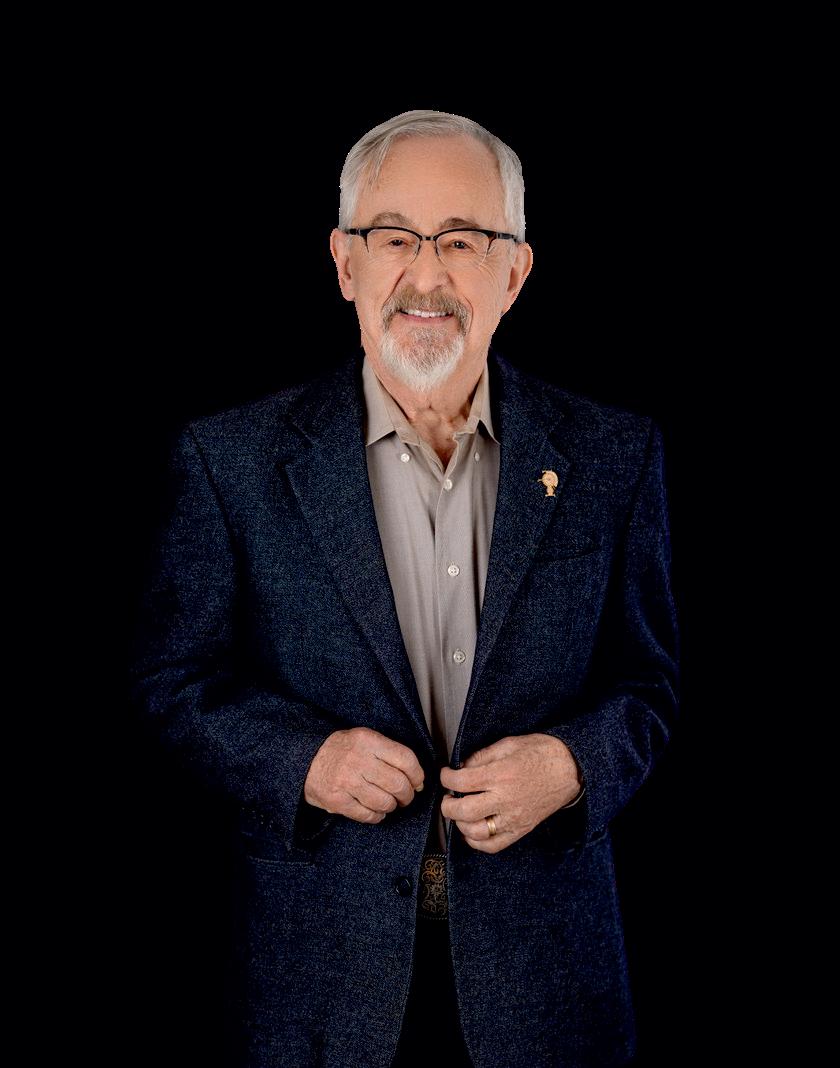


Inthelandscapeofeducation,fewindividualshavehadas
profound an impact as Richard Larson. A name synonymouswithacademicexcellence,innovation,and mentorship,Larson’sjourneythroughdecadesofeducational transformation reflects an unwavering commitment to nurturing intellectual curiosity, shaping practical thinkers, and mentoring future scholars. His life and work at the Massachusetts Institute of Technology (MIT) paint the picture of a man driven by purpose, unafraid to challenge norms,andalwayswillingtoreinventhimselfforthegreater goodofeducationandsociety
AsaprofessoratMIT,Larson’scontributionshaveextended well beyond the walls of the classroom. His ability to blend teaching, research, and meaningful community engagement has made him a pioneer in the field of education. Through initiatives like MIT BLOSSOMS and his dedication to high school outreach, he has demonstrated how a passionate educator can truly democratize learning. Whether working with underprivileged students or mentoring doctoral candidates,hisinfluencecontinuestoshapelivesinprofound andlastingways.
This profile explores Richard Larson’s perspectives and accomplishmentsinhisownwords—hisbeliefsonteaching, the essence of mentorship, his bold approach to academic traditions, and his continued advocacy for Model-Based Thinking.As we delve into his unique journey, we uncover lessons not only for educators and students but for anyone who seeks to make a difference through knowledge, compassion,andinnovation.
JourneyThroughMIT’sAcademicEnvironment
Richard Larson’s journey at the Massachusetts Institute of Technologybeganmodestly,asanewlymintedPh.D.withno expectations of a lifelong affiliation. “I had no idea that I would become an MIT lifer,” he shares. Initially invited to jointhefacultyasanassistantprofessoruponcompletinghis doctoral thesis focused on Operations Research and modeling urban police systems—Larson accepted with the assumptionthatitwasatemporaryphase.Butasfatewould haveit,MITbecamehisprofessionalhomefordecades.
Over the years, Larson held faculty positions across five different academic departments This interdisciplinary involvement reflects both his versatility and the institution’s recognition of his value across domains. “Teaching and working with students have been the most rewarding activities for me,” he says, encapsulating a career built on meaningful academic relationships. His presence at MIT is
notjustdefinedbytimeservedbutbythedepthofinfluence he’shadongenerationsoflearners.
Larson's journey highlights how an educator's commitment can evolve from a temporary role to a lifelong calling, creating ripples of transformation within a world-class institution.
NurturingaJoyofLearning
At the heart of Richard Larson’s teaching philosophy lies a deep appreciation for learning itself “For teaching and mentoring students, I always approach a new topic with an enthusiasticopenmind,”heexplains.Hisstyleisgroundedin curiosity and inclusivity, aiming to understand diverse perspectiveswhileexploringnewconcepts.
Larson believes the greatest gift an educator can offer is to instillthe joy of learning intheirstudents.“Minimizingfocus on content memorization and maximizing attention to learning how to learn is highly effective,” he insists. This mindset encourages students to approach challenges with confidence and creativity, skills that extend far beyond traditionalclassroomboundaries.
Through this nurturing approach, Larson has inspired studentstothinkcritically,questionassumptions,andengage deeply with material not simply to perform well academically,buttocultivatelifelongintellectualgrowth.
Larson has widened the reach of MIT’s educational ethos far beyond its campus—helping students in underserved communities engage with complex scientific ideas in an interactive, intuitive manner.” “
Over the years, Larson held faculty positions across five different academic departments. This interdisciplinary involvement reflects both his versatility and the institution’s recognition of his value across domains.” “
DualRole:ResearcherandAuthor
For Richard Larson, the responsibilities of an academic extend beyond teaching. “There are two significant ways to influencethenextgenerationofscholars,”heexplains.“One is by being a graduate research advisor, and the other is throughwritingresearchpapers.”
Asaresearchadvisor,Larsonviewshisroleasacollaborative partner someone who provides consistent support, direction,andcriticalfeedbacktohelpyoungscholarsgrow. HisworkwithPhDcandidatesisgroundedinmutualrespect and a desire to help them navigate both academic and realworldchallenges.
Equally important is Larson’s contribution to scholarly literature.Authoringandco-authoringpapers,hebelieves,isa form of intellectual legacy—an enduring influence on his fieldandawaytosparknewideasamongpeersandstudents alike.
PragmaticEducationalPhilosophy
Richard Larson does not chase academic trends. Instead, he focuses on what is directly in front of him—students, realworld problems, and the craft of education itself. “I tend to ignore academic trends and simply focus on what is here before me,” he says, reaffirming his grounded and studentcentricapproach.
This practical mindset led to one of his most impactful innovations: MIT BLOSSOMS (Blended Learning Open Source Science or Math Studies), a free, open-source repositoryofvideolessonsforhighschoolSTEMeducation. “All BLOSSOMS lessons I created are now freely available worldwideviaYouTube,”henoteswithpride.
By making high-quality STEM content accessible globally, LarsonhaswidenedthereachofMIT’seducationalethosfar beyond its campus helping students in underserved communities engage with complex scientific ideas in an interactive,intuitivemanner
EmpoweringStudents,EmbracingLegacy
Even beyond MIT, Richard Larson continues to empower students through his involvement with Notre Dame Cristo ReyHighSchool,whereheservesontheboard.Theschool operates on a unique model that combines academics with a work-study program, enabling students from socioeconomically disadvantaged backgrounds to receive a highqualityeducationwithsubstantialtuitionsupport.
Larson praises the school's mission and its results: “The graduatingstudentshavea100%acceptancerateatfour-year colleges,” he points out, highlighting the transformative impact of equitable education. His volunteer work is deeply personal and purpose-driven. “If I have played some small positiverole,Iamhappy.”
In reflecting on his legacy, Larson remains humble. He doesn’tdwellonlong-termrecognitionbutfindsfulfillmentin the tangible impact of his efforts—both in elite academic settingsandgrassrootseducationalinitiatives.
BlendingAcademicandPersonalLife
Richard Larson rejects the notion of a rigid divide between personal life and academic responsibilities. “It’s all intertwined into a beautiful lifestyle and workstyle combination,” he explains. His friendships with fellow facultymembersandformerstudentshaveenrichedhislifeon bothprofessionalandpersonallevels.
This seamless integration has allowed Larson to maintain a vibrant network of collaborators and mentees His perspectiveunderscoresatruthoftenoverlookedinacademia: human connection is a vital component of intellectual fulfillment.

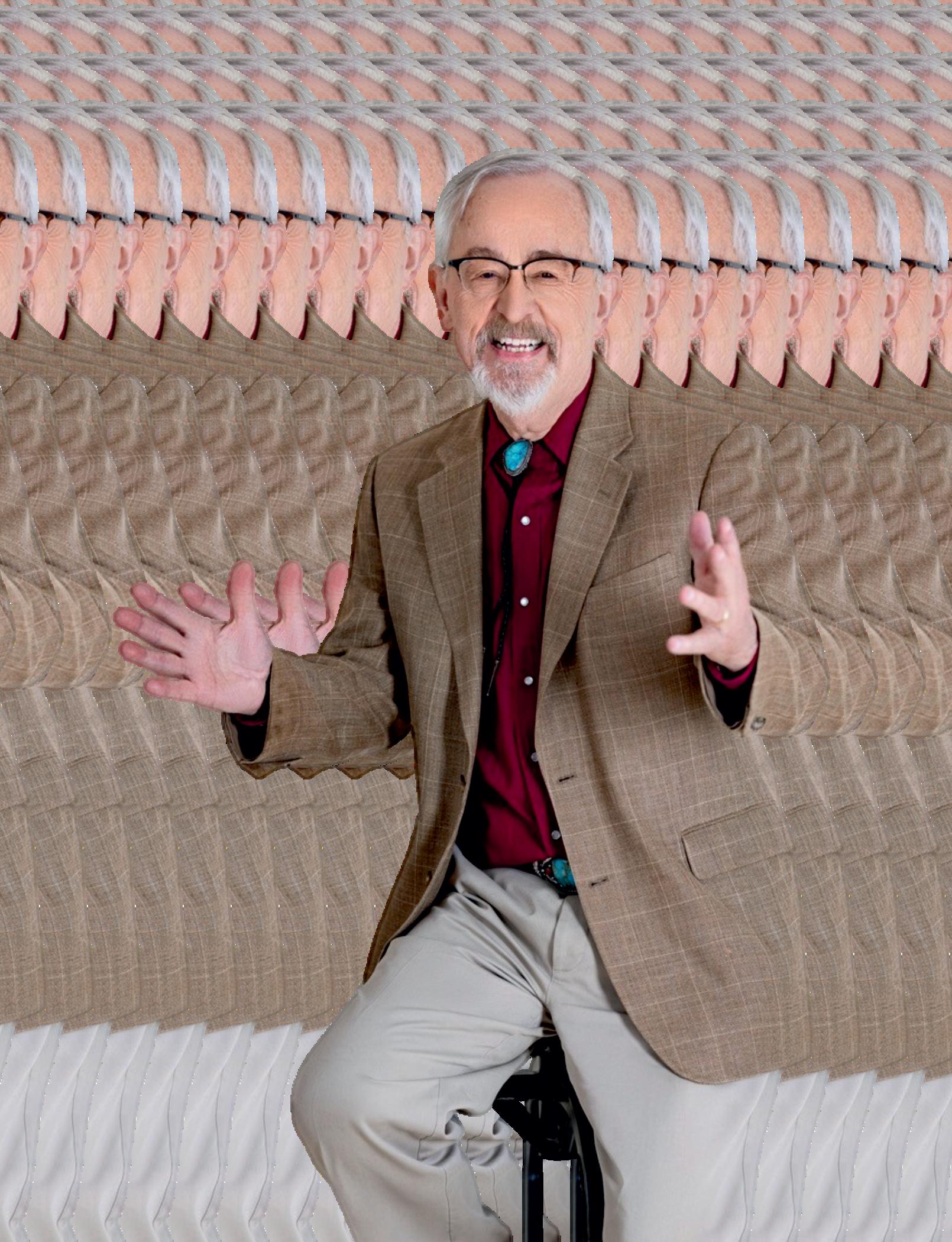


“
Richard Larson rejects
the notion of a rigid divide between personal life and academic responsibilities.”
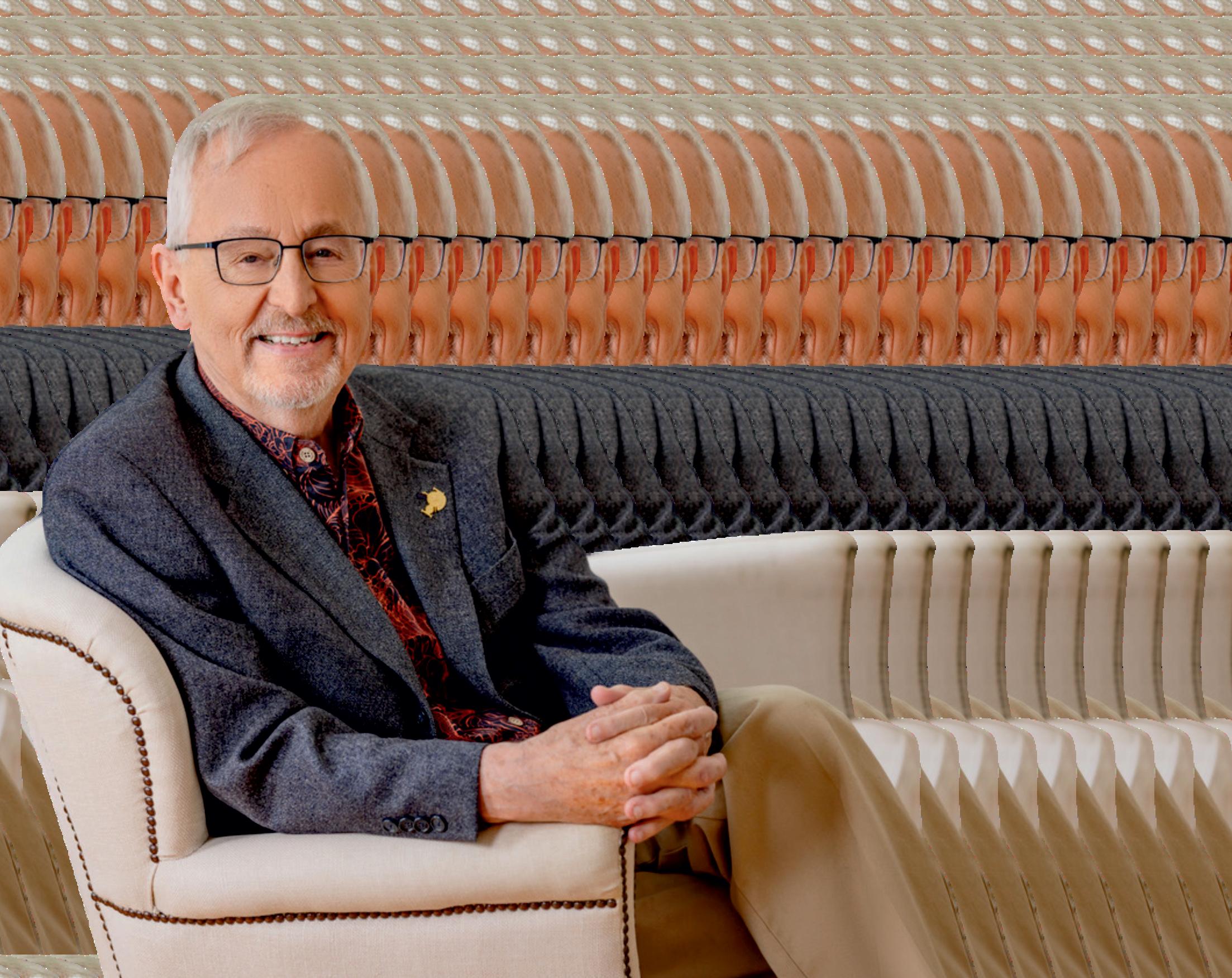


Inblendingthesespheres,Larsonhascreatedalifethatisas personallymeaningfulasitisprofessionallydistinguished—a rareandadmirablebalance.

resigned my tenure-track slot, opening it for a younger, upand-coming faculty member,” he shares—a selfless gesture thatalsoreflectshisbeliefingenerationalsuccession.
MentorshipThatEndures
Having supervised over 30 PhD students, Richard Larson treasures the enduring relationships that mentorship fosters. “Many stay in touch with me, and their continual communication reinforces the tie that we continue to have,” heshares.
To him, mentorship isn’t limited to the years of formal supervision it’s an ongoing connection His students’ careers, whether in academia or industry, often reflect the foundational skills, ethics, and enthusiasm instilled during theirtimewithhim.
ThislifelongbondreflectsLarson’sinvestmentintheholistic development of his students—not just as scholars, but as peoplepoisedtoshapetheworld.
AuthenticityandIntellectualPassion
Larson’s message to young academics is refreshingly straightforward: “Be true to yourself.” For those aspiring to thrive in academia, he urges a focus on genuine intellectual passion over external approval. “Pursue topics that arouse yourintellectualpassions.Youmustanswertoyourselffirst, thenothers,”heaffirms.
He advises young scholars to seek academic environments that value curiosity and independent thought—free from dogmaandbureaucracy.Bydoingso,theycanbuildcareers groundedinauthenticity,creativity,andlastingimpact.
His wisdom serves as both a guiding principle and a call to action:thatsuccessinacademiastemsnotfromconforming, butfromcaringdeeplyabouttheworkitself.
The“Professor,Post-Tenure”Evolution
Though retired from formal teaching, Richard Larson remains an active contributor to the academic world. To reflect this continued engagement, he worked with MIT leadership to create a new designation: “Professor, PostTenure.”
Thisinnovativetitlerecognizesseniorfacultywhonolonger hold tenure-track roles but remain deeply involved in research, mentorship, and institutional development “I
Today, this new title is gaining traction at other institutions, setting a precedent for how academia can evolve to better accommodateandhonoritsseniorthoughtleaders.
Model-Based
Thinking:HisNewFrontier
Currently, Richard Larson is championing a new mission—introducing his unique framework of MODELBased Thinking to a broader audience. Through his latest book, MODEL THINKING For Everyday Life,Larsonoffers readers tools to apply structured thinking to real-life situations,decisions,andchallenges.
This approach draws from his years in Operations Research and systems modeling, but it is designed to be practical, intuitive, and accessible beyond academia Whether navigating personal decisions, managing organizations, or shaping public policy, MODEL-Based Thinking offers a versatileandtransformativelens.
Through this work, Larson continues his lifelong mission: making complex ideas accessible, useful, and empowering forall.
ALegacyRootedinPurpose
Richard Larson’s career embodies the highest ideals of academia curiosity, generosity, innovation, and a deep respect for learners. From MIT classrooms to underserved high schools, from scholarly research to YouTube STEM lessons, his influence resonates across borders and generations.
Through mentorship, teaching, authorship, and outreach, Larson has not only shaped academic minds but also redefinedwhatitmeanstobeaneducatorinthe21stcentury. And with his new initiatives like MODEL-Based Thinking and the “Professor, Post-Tenure” concept, he continues to leadwithvisionandhumility
His story is more than an academic profile—it’s a powerful reminderofhowoneperson,drivenbyaloveoflearninganda commitmenttoservice,canchangetheworld,onestudentata time.

LEADING THE WAY IN GLOBAL EDUCATION STRATEGIES
Inanincreasinglyinterconnectedworld,educationserves
as a powerful driver of social progress, economic development, and global cooperation. The pursuit of effectiveandinclusiveeducationstrategieshasbecomeatop priorityfornationsstrivingtocompeteintheglobaleconomy while addressing persistent disparities in access and quality. As challenges become more complex, including technological disruption, migration, and climate change, the need for strategic leadership in global education has never been more urgent. Countries, institutions, and organizations are rethinking how education systems are designed and delivered to better prepare learners for an uncertain future. Global education strategies today go far beyond curriculum development or infrastructure improvements. They encompass policy innovation, cross-border collaboration, and the integration of digital tools to make education more www.ciolookmedia.com
equitable, relevant, and resilient. Leading these strategies requiresacombinationofvisionaryleadership,deepcultural awareness,andacommitmenttomeasurableoutcomes.Atthe heart of successful efforts is the recognition that education must adapt to the needs of diverse populations while maintaining a global outlook that encourages shared values, mutualunderstanding,andsustainabledevelopment.
BuildingResilientandInclusiveEducationSystems
One of the core objectives of global education leadership is thecreationofsystemsthatcanadaptandthriveinthefaceof disruption. The COVID-19 pandemic underscored the vulnerabilities of traditional education models, especially in low- and middle-income countries where digital infrastructureandaccesswerelimited.Inresponse,forwardthinkingstrategieshaveprioritizedresiliencethroughflexible

learning modalities, including blended and remote learning options. These strategies focus on ensuring continuity of learningduringcrisesandlong-termimprovementsinaccess andequity
Inclusivity is equally vital in shaping successful global education strategies. Millions of children and youth around the world remain excluded from formal education due to socioeconomic barriers, disability, displacement, or genderbaseddiscrimination.Globalleadersineducationareactively promoting inclusive policies that remove these barriers and expand opportunities for all learners This includes investment in early childhood education, support for marginalizedgroups,andprogramstailoredtolocalcontexts. The most effective strategies are those that not only bring learners into the system but also ensure they succeed and thriveoncethere.
Strengthening International Collaboration and KnowledgeExchange
Collaboration across borders has emerged as a key pillar in advancing global education strategies. No single country or institutionhasalltheanswers,andglobalchallengesrequire sharedsolutions.Educationleadersareincreasinglyengaging in partnerships that promote knowledge exchange, joint research, and policy alignment. International organizations, non-governmental groups, and academic institutions are working together to pilot innovative models, evaluate outcomes, and scale successful initiatives These collaborations are especially valuable in addressing issues such as teacher shortages, curriculum modernization, and educationfinancing.
Equally important is the emphasis on cultural exchange and the global competencies needed in the modern workforce. Educationstrategiesthatincludestudentmobilityprograms, multilingual education, and intercultural learning contribute to a deeper understanding of global issues and prepare students to engage in a diverse world. By fostering global citizenship and encouraging open dialogue, these strategies help break down stereotypes, build empathy, and create a generation of leaders capable of addressing complex, crossborder challenges. International cooperation in education is no longer optional; it is essential for peace, prosperity, and progress.
EmbracingInnovationandEvidence-BasedPolicy
Attheheartofleadingglobaleducationstrategiesistheability to harness innovation responsibly and effectively Digital
toolsanddataanalyticsarereshapinghoweducationsystems operate and how learning is delivered. Leaders in global education are leveraging these tools to personalize learning, monitor student progress, and support educators From adaptive learning platforms to artificial intelligence-driven contentdelivery,innovationisbeingusedtoenhancelearning outcomes and bridge gaps in educational access. However, effectivestrategiesensurethattechnologyservespedagogical goalsratherthanreplacingfoundationalteachingpractices.
Evidence-based policy-making is another cornerstone of global education leadership Data collection, impact assessments,andrigorousevaluationarenecessarytoinform decision-makingandallocateresourcesefficiently Themost successfulstrategiesarethosebuiltonreliableevidenceand transparent processes. Policymakers and education leaders areincreasinglyinvestinginrobustresearchsystemsthatcan track progress, identify challenges, and generate actionable insights By aligning innovation with evidence, global education strategies can remain adaptive, scalable, and sustainableovertime.
Conclusion
The pursuit of effective global education strategies is a defining challenge of our time. As the world faces interconnected social, economic, and environmental issues, educationmustevolvetopreparelearnerstoleadinacomplex and rapidly changing landscape Visionary leadership, international cooperation, and a steadfast commitment to equityandinnovationareessentialtomeetingthischallenge. Through resilient systems, inclusive policies, and global collaboration, leaders can shape education that empowers individuals and strengthens communities around the world. Byplacinglearnersatthecenterofstrategydevelopmentand embracing both innovation and inclusivity, global education leaders are setting a course toward a more equitable and prosperous future The success of these strategies will ultimately be measured not only by academic achievement but by the ability of education to unlock potential, foster understanding,andcreatelastingsocietalchange.
The Rise of EDUCATION TECHNOLOGY Influencers
In the digital era, education has undergone a significant
transformation, driven largely by advancements in technology Asschools,universities,andlearnersacross allagesembracedigitaltoolsandplatforms,anewcategoryof thought leaders has emerged education technology influencers. These individuals have gained prominence by leveragingsocialmedia,blogs,podcasts,andvideoplatforms toshareinsights,promotetools,andfosterdiscussionsonthe future of education Their influence extends beyond traditional academic circles, shaping the opinions of educators, policy-makers, and edtech companies alike Education technology influencers serve as a bridge between complexinnovationsintechnologyandthepracticalneedsof educators and students. They play a crucial role in demystifying digital tools, providing honest reviews, and advocating for practices that enhance teaching and learning. Withtheirabilitytocommunicateeffectivelyandreachwide audiences, these influencers have become pivotal figures in the edtech ecosystem. Their rise reflects broader trends in education and technology, including a growing appetite for personalized learning, flexible content delivery, and global collaboration.
InfluencersasCatalystsforChangeinClassrooms
One of the most notable contributions of education technology influencers is their ability to introduce and popularize new tools in educational settings. Teachers often rely on peer recommendations when integrating new technologies into their classrooms. Influencers, many of whom are current or former educators themselves, provide trusted voices that educators turn to when exploring unfamiliar platforms. Whether through YouTube tutorials, Twitterthreads,ordetailedblogposts,influencersofferrealworld applications and user experiences that help demystify edtechsolutions.
Beyond tool recommendations, these influencers are also shaping pedagogical strategies. They highlight emerging trends such as flipped classrooms, gamified learning, and artificial intelligence-driven instruction. By sharing case studies and success stories, they inspire educators to experiment with innovative approaches and rethink traditional methodologies. Their content often goes beyond product endorsements, addressing deeper issues such as digital equity, student engagement, and teacher burnout. In doingso,theynotonlyinformbutalsoempowerteachersto adaptandevolveinanever-changingeducationallandscape.
DrivingIndustryInnovationandConsumerAwareness
Education technology influencers are not only shaping classroom experiences but also influencing the direction of the edtech industry itself Companies in this space are increasinglypartneringwithinfluencerstogainvisibilityand build trust within the education community Influencer feedback often helps developers refine their products based on real-world classroom use and educator needs This collaborationresultsinmoreeffective,user-friendlysolutions thataddresstheactualchallengesteachersface.
From a marketing perspective, the authenticity and relatability of influencers offer a compelling alternative to traditional advertising Unlike conventional promotional campaigns, influencer content is perceived as more genuine and experience-based This dynamic has led to a more informed and discerning customer base. Educators and administratorsnowmakepurchasingdecisionsnotjustbased on specifications or price but on peer testimonials and lived experiencessharedbyinfluencers.Theresultisamarketmore responsivetoeducatorneedsandmorefocusedonoutcomes thanfeaturesalone.

ChallengesandResponsibilitiesofInfluence
Despite their growing prominence, education technology influencers face several challenges that come with their influentialroles.Onemajorconcernisthepotentialconflictof interest when influencers are compensated by companies to promotecertainproducts.Whilepartnershipsarealegitimate aspectofdigitalinfluence,transparencyiscritical.Followers relyoninfluencersforunbiasedinsights,andanyperception of commercial bias can quickly erode trust. Maintaining credibility requires clear disclosure of sponsorships and a consistentfocusonvalueratherthanpromotion.
Another challenge is the pressure to remain current in a rapidly evolving field. Education technology is in constant flux, with new tools and trends emerging regularly. Influencers must stay informed, continuously test and evaluatenewproducts,andengagewithadiversecommunity of educators and learners. This ongoing effort can be timeconsumingand,attimes,overwhelming.Yet,itisessentialfor maintainingrelevanceandprovidingmeaningfulguidanceto their audience. As their role becomes more central to the education discourse, influencers must also consider the broader implications of their advice, including issues of accessibility, equity, and long-term impact on teaching practices.
Conclusion
The rise of education technology influencers represents a significant shift in how educational innovations are communicated, adopted, and evaluated. These individuals occupy a unique space at the intersection of technology, pedagogy,anddigitalcommunication.Theyservenotonlyas advocatesfornewtoolsbutalsoascatalystsforpedagogical change and industry development. As the education landscape continues to evolve, the role of these influencers will likely expand further, offering both opportunities and responsibilities. In a world where technology is rapidly reshaping how knowledge is delivered and consumed, education technology influencers help ensure that change is guided by insight, experience, and a commitment to student success. By connecting the dots between innovation and practice,theyareplayingacrucialroleinshapingthefutureof learning. Their influence, if wielded responsibly, has the power to foster more inclusive, engaging, and effective educationsystemsworldwide.
